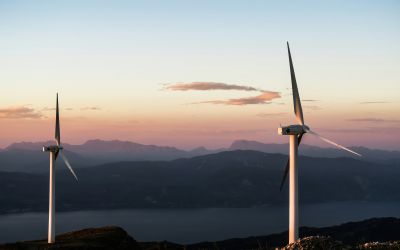Bold action in three areas can accelerate multiple energy transitions
New research from EY reveals that there is not one energy transition, but many, proceeding at different paces and in different ways around the world. All are set to accelerate over the next decade, but only if bold action is taken now.

The world’s energy system has changed before, but not like this. New research from EY reveals that there is not one energy transition, but many, proceeding at different paces and in different ways around the world. All are set to accelerate over the next decade, but only if bold action is taken now.
The energy system is changing fast — but progress could stall
Modeling suggests these multiple energy transitions are progressing faster than many predicted.
A new energy system is already emerging, but our modeling reveals that post-2030 is when we’ll see the biggest changes. Solar- and wind-generated electricity will power almost everything. Energy supply and demand will be co-located, creating a highly localized energy system. Oil and gas will remain, but become much greener, through synthetic and alternative fuels. And more active, engaged consumers will underpin it all.
But this promise of a sustainable, resilient future, where more people have access to cleaner, cheaper energy, is not guaranteed. The years ahead will be marked by energy system changes more complex than those faced so far and requiring unprecedented levels of investment. We face a real risk of stagnating progress, unless the energy sector, in collaboration with the broader energy ecosystem, takes bold action across three focus areas:
Incentivizing the switch from old to new energy: Even the most ambitious build-out of renewables won’t achieve decarbonization unless we simultaneously and aggressively retire legacy energy assets. Incentivizing the move away from fossil fuels requires more policies like the US’s Inflation Reduction Act and the EU’s Green Deal, designed to make hydrocarbon-generated energy more expensive more quickly, and attract investors to renewables. With oil and gas remaining part of the energy mix for some time, more investment is also needed to “green the molecule” through maturing and scaling technologies such as carbon capture and developing new synthetic fuels. The challenge for oil and gas companies will be to balance investment in these new technologies while ensuring core assets remain as operationally efficient as possible.
Strengthening the supply chain: A lack of trust in mining is undermining the industry’s ability to secure capital, win approvals and attract talent. Unless miners can overhaul their reputation — and fast — we risk a major shortfall in the critical minerals needed to build almost every renewable energy asset. We see this as an opportunity for miners. Those that double down on ESG and demonstrate their value to communities, governments and investors can gain a clear competitive advantage. We already see the market rewarding miners that have decarbonized operations and developed greener premium products that meet demand for sustainable supply chains.
Meeting changing consumer demands: In every market, energy transitions will only succeed if consumers — residential and industrial — take the lead. But we can’t expect people and businesses to change their behavior because of sustainability motivations alone. Clean energy must be cheaper and genuinely better. Energy companies will need to identify and develop more compelling value propositions, or we risk consumer fatigue stalling progress.
Now is the time to accelerate
We’ve reached a critical turning point in our energy transition journey. What we’ve achieved so far in building out renewables and electrifying transport has been relatively simple compared with what comes next. Continued progress is not a given — targeted actions can keep up the momentum of change, accelerate progress and meet climate targets. Action led by energy and resources companies, but in collaboration with government, other sectors and all of us, can accelerate the journey to create a cleaner, more resilient and sustainable energy system.
Read the full article to explore how organizations that commit to the right actions now can quicken the journey to a decarbonized future and realize significant commercial opportunities.
The views reflected in this article are the views of the author and do not necessarily reflect the views of the global EY organization or its member firms.






